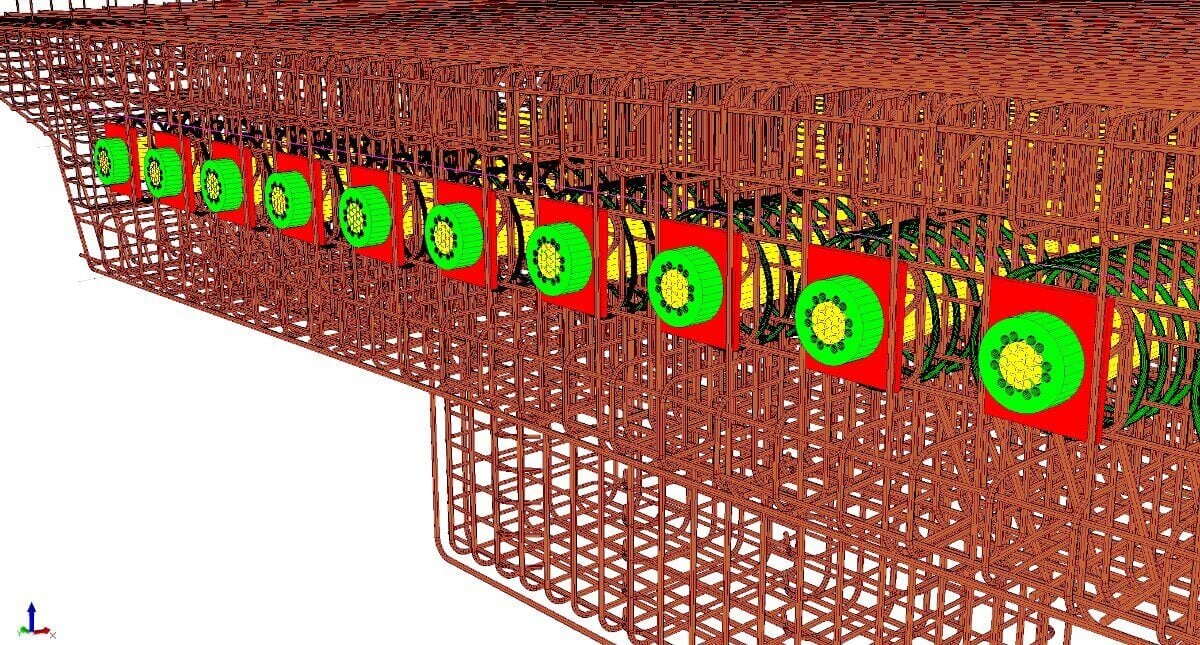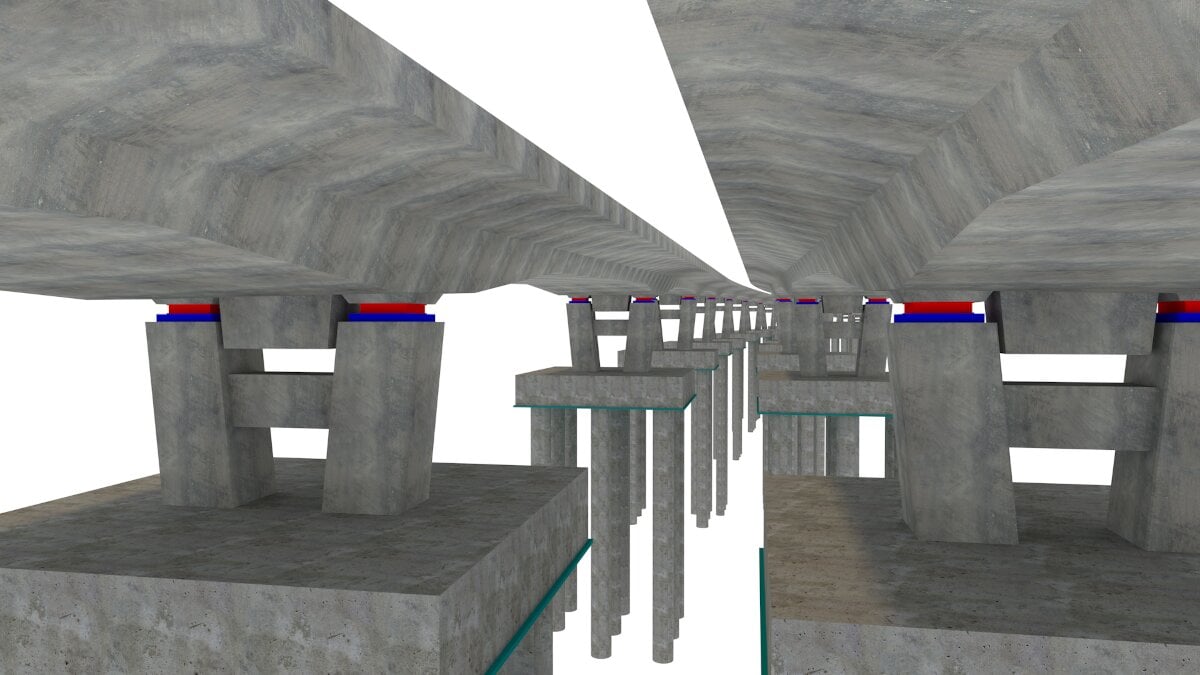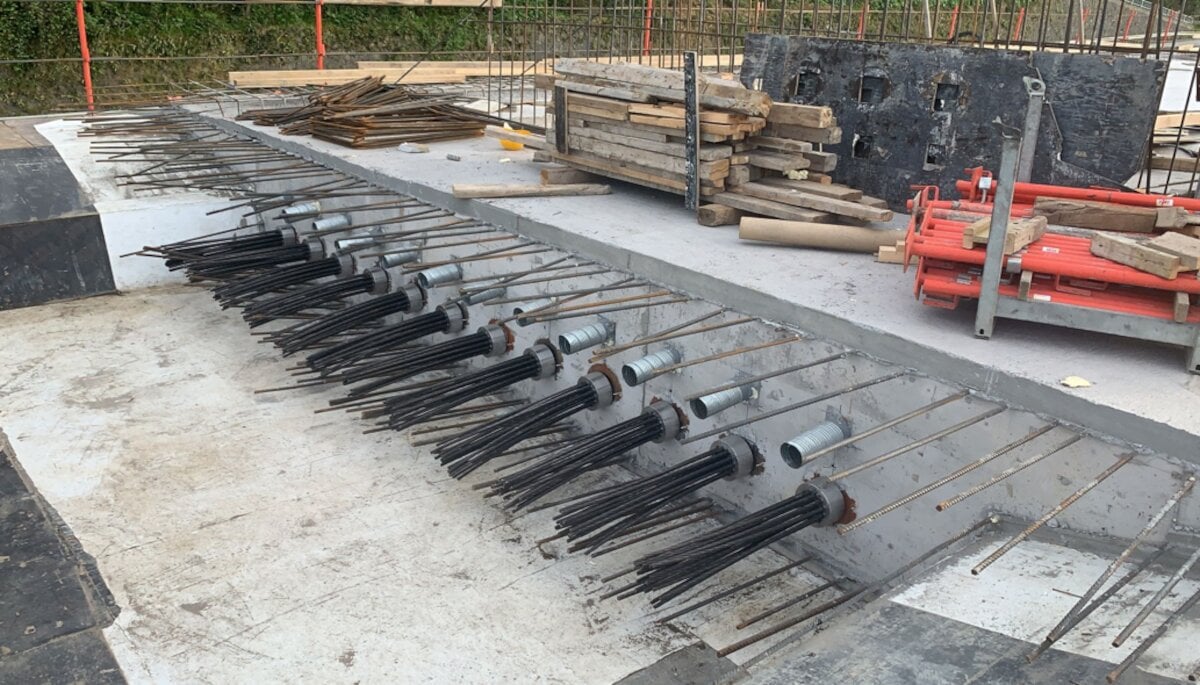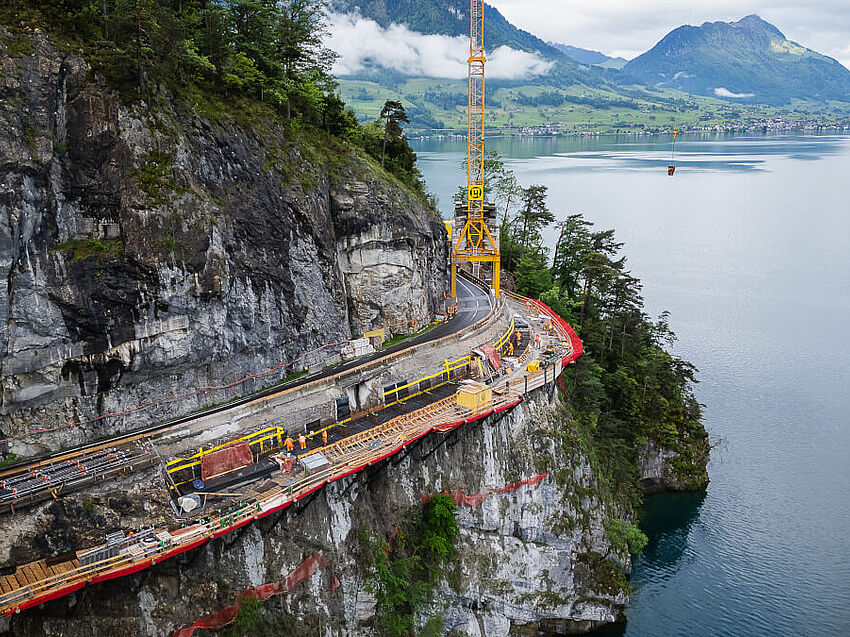Located on reclaimed land off the northeastern coast of Turkey is the new Rize-Artvin Airport. The airport is a top priority for the Turkish government, with construction commencing in Spring 2020 and completion achieved by the end of 2021. As part of the works, the airport required a new cast in-situ, post-tensioned bridge to connect to the existing roads between the towns of Rize and Artvin. Yüksel Proje, a Turkish engineering consultant, was commissioned for the bridge design.
However, the bridge needed to be completed prior to the opening of the airport, leaving just a two-month design period. While the client had not specified the use of BIM on this project, Yüksel Proje realized that the only way to efficiently design the Rize-Artvin Airport Bridge in the time allotted was to use advanced BIM-enabled 3D modeling software.

A Challenging Bridge Design
Spanning 444 meters, the bridge deck will reach a variable thickness of 120 to 180 cm and contain 13 spans along the length. Besides the compressed design and construction schedule, the bridge presented several other challenges. It was being built on reclaimed land, which required additional surveys and analysis. The bridge itself also required complex geometry, such as a varying deck height, the eccentricity of the V-shaped bridge piers, and the variable piles and their spacing. These factors also meant that designing the axis of post-tensioning tendons was another challenge.

Solving Problems with Parametric Bridge Design
Yüksel Proje used ALLPLAN and ALLPLAN Bridge for a large proportion of their design work, as the parametric bridge design program would help accelerate the design and any changes required.
For example, the 3D terrain and road models were able to be imported into ALLPLAN Bridge and then used as the basis for the bridge design, providing an accurate and coordinated base to work from. It allowed the bridge engineers to model different bridge alternatives and see the interaction between the geometry of the bridge with the existing site terrain, as well as any excavations and other site features quickly and easily. Parametric modeling also helped when designing the bridge deck, as the geometry of the bridge deck varied along the length. The bridge cross-section was created parametrically and then extruded along the bridge alignment to quickly create the 3D bridge model.
Where the tendons crossed was particularly difficult to model accurately. Here, parametric modeling was required to ensure the tendon design was done precisely and efficiently. The ability to input the variations of the tendon profile and adjust the model easily by modifying these parameters made the design much easier than continually re-modeling the tendons with every design iteration.

An Accelerated Design Phase
Once the bridge was modeled, it was imported into ALLPLAN where the section details and reinforcement design and detailing was carried out. Other benefits of having a 3D bridge model included the automatic clash detection tools and the accurate quantity calculations. This not only improved the design quality, but also ensured that the design phase was as efficient as possible. With such a short design window, accelerating design activities was essential in order to deliver on time. In addition, ALLPLAN Bridge has enabled the bridge design team to support the contractor by providing any additional information required during the construction phase quickly and easily.

Leading the Way with BIM for Bridges
The benefits of using a specialist, parametric 3D bridge solution were clear for Yüksel Proje – without it, they would not have been able to complete the bridge design in the allocated timeframe. The engineers estimated that without ALLPLAN Bridge, they would have required at least four months to complete the design instead of just two – a significant increase. This leap in productivity is why Yüksel Proje are now using ALLPLAN Bridge to model nearly all their new bridge projects. For them, 3D bridge design using BIM is no longer an optional extra, it’s an essential part of delivering a quality project on time and to budget.
ALLPLAN offer a free, 30-day trial of their 3D bridge design software – why not see what you can achieve with it as well?





